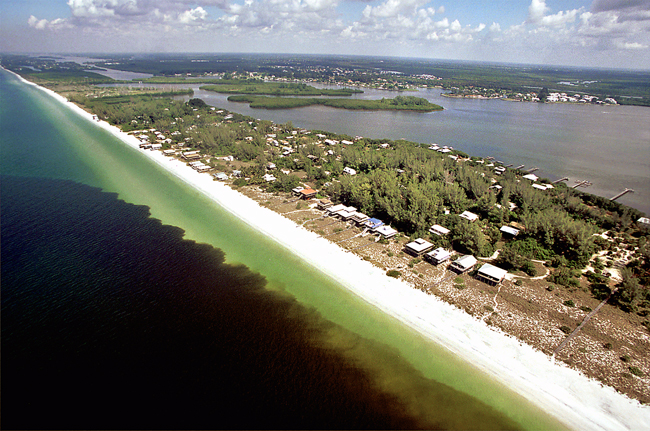Harmful algal blooms (HABs) are accumulations of algae biomass that reach concentrations high enough to potentially harm the environment or humans. Algal blooms can be considered harmful for a variety of reasons, including the creation of low oxygen conditions, production of toxins, and the accumu ation of inedible or physically damaging algae species. All three situations can cause massive fish kills and toxins can directly or indirectly (by contaminating shellfish) harm humans.

“Red tide” is a general term given to many HAB events that cause discoloration of water. However, not all HAB events are red in color, but come in a range of colors depending on the species involved. A number of HAB species in Florida are known or suspected of producing toxins. For example, when Florida Department of Agriculture and Consumer Services (FDACS) uses the term “red tides”, it is often in reference to blooms of the dinoflagellate species Karenia brevis. Karenia brevis is a prolific bloom-forming toxic alga along the west coast of Florida responsible for mass mortalities of fish, shellfish, and marine mammals (such as manatees) as well as widespread respiratory distress and eye irritation of human populations. Since humans can become seriously ill from consuming shellfish contaminated with red tide toxins, shellfish harvesting areas are temporarily closed when K. brevis concentrations reach above 5,000 cells per liter or when any red tide effects (water discoloration, fish kills, or human respiratory irritation) are observed.
Not all red tides in Florida are formed by Karenia brevis. For example, Pyrodinium bahamense is another toxic HAB dinoflagellate that is often observed in a number of Florida’s estuaries.
HAB Web Resources:
To check open/closure status of shellfish lease areas and access FDACS technical bulletins about red tides:
https://www.fdacs.gov/Agriculture-Industry/Aquaculture/Shellfish/Shellfish-Harvesting-Area-Classification
For information on HABs in Florida:
https://myfwc.com/research/redtide/
For a reference list of toxic algal species and information on HAB events worldwide:
http://www.marinespecies.org/hab